#heian period costumes
Text

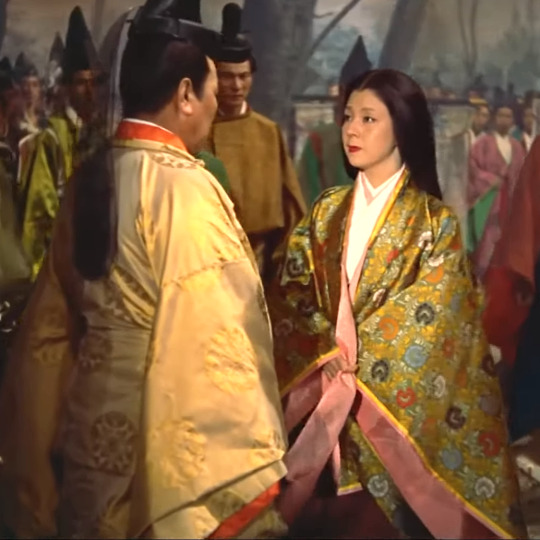


One Dress a Day Challenge
November: Oscar winners
Gate of Hell / Machiko Kyô as Kesa
Year: 1954
Designer: Sanzo Wada
As far as I can tell, this was the first non-American film to win the Academy Award for Best Costume Design, and when you look at the lush silks and detailed armor, it's easy to see why.
This film was released in Japan in 1953, but it did not get a US release until 1954, so it won the award for the later year.
#gate of hell#oscar winners#machiko kyo#one dress a day challenge#one dress a week challenge#movie costumes#period film#japanese films#japanese movies#japanese cinema#1953 films#1953 movies#12th century costumes#heian era#heian period costumes#academy award winner#Machiko Kyô#Kyô Machiko
34 notes
·
View notes
Photo
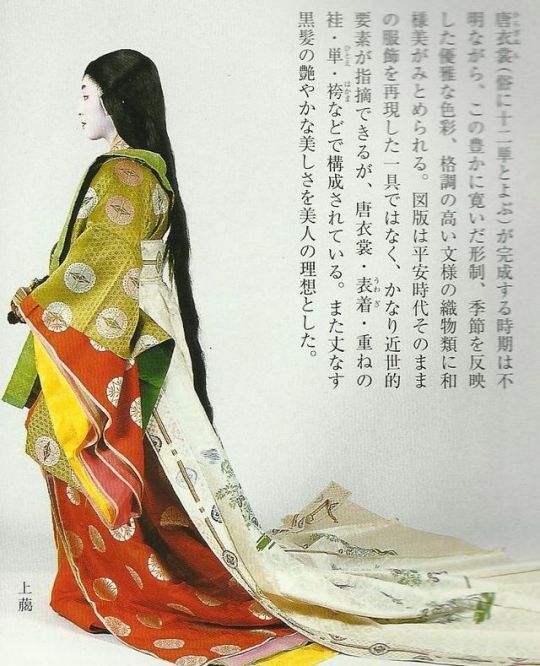
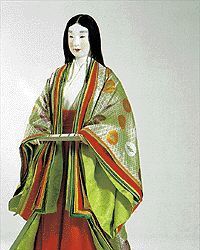
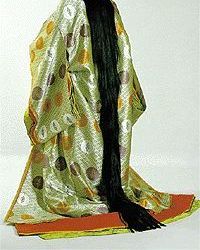
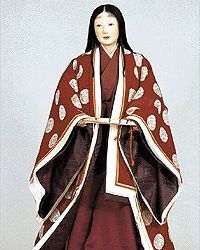
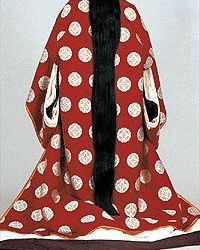
Heian Period (794-1185) Japan costumes;
High-ranking court lady and a
Princess wedding kimono.
172 notes
·
View notes
Text


the stunning machida keita as fujiwara no kintō!
kintō's robes are black (left) while tadanobu and michinaga's (not pictured) are scarlet, as he is of a higher rank.
#hikaru kimi e#taiga drama#taiga drama 2024#jdrama#asian drama#machida keita#fujiwara no kinto#heian period#heian era#historical costumes#historical costuming
11 notes
·
View notes
Text


Samurai's ranks and dress code in Late Edo period
AMAZING reference chart put together by Nadeshico Rin, showing the different attires worn by the men of the buke class in and about Edo Castle. OP stresses the chart is by no means exhaustive - but it helps picturing things SO MUCH!
For easier reading, I have adapted the chart with english translation. Rin has also created illustrations detailing each attire, I'll translate those in coming days under the tag "samurai kimono".
You'll find the transliteration below cut:
The court ranks - Mibun 身分 or Ikai (位階)
Find more about the exact titles here.
一位 Ichii (First court rank)
三位 Sanmi (Third court rank) and 四位 Shii (Fourth court rank)
Goi 五位 (Fifth court rank)
Omemie ijô 御目見 以上, the "upper" vassals allowed to request audience with the shogun
Omemie ika 御目見 以下, the "lesser" vassals (not allowed to request audience with the shogun)
Rin does not mention the second court rank (二位 Nii) so I am not sure where this one is supposed to go ^^;
The clan/families - Kamei 家名
徳川将軍家 Tokugawa shôgunke (Tokugawa Shogun clan)
尾張徳川家 Owari Tokugawake (Owari Tokugawa clan), 紀伊徳川家 Kii Tokugawake (Kii Tokugawa clan), 水戸徳川家 Mito Tokugawake (Mito Tokugawa clan), 徳川御三卿 Tokugawa gosankyo (Secondary Tokugawa branch clans: Tayasu, Shimizu, and Hitotsubashi)
三奉行 Sanbugyô, & 下三奉行 Shimosan bugyô (magistrates, governors)
旗本 Hatamoto (general term for upper-rank vassals of the Tokugawa)
御家人 Gokenin (general term for lower-rank vassals of the Tokugawa)
Outfits TPO (Time, Place, Occasion)
第一礼服 (大礼 など) Daiichi raifuku (tairei nado) - Most formal outfit worn during State/important ceremonies, etc.
礼服 (正月など) Raifuku (Shogatsu nado) - Formal outfit, worn for events like New Year, etc.
通常礼服 (節句など) Tsûjô raifuku (sekku nado) - Regular
formal outfit, worn during seasonal festivals, etc.
平服 Heifuku - Everyday outfit
Type of outfits
Rin has released separated charts detailing the different costumes. You'll find them translated here in coming days.
束帯 Sokutai - old ceremonial court dress, first worn by Heian nobility. Attire includes the 笏 shaku (flat ritual sceptre), and 冠 kanmuri hat.
衣冠 Ikan - old ceremonial court dress, much more simpler than sokutai
布衣 Hoi - "plain" 狩衣 kariginu (which were informal clothes worn by the nobility from the Heian period and onwards)
素襖 Suô - ceremonial dress of the lower-ranked samurai
直垂 Hitatare - ceremonial court robe
狩衣 Kariginu - patterned kariginu (informal clothes worn by the nobility from the Heian period and onwards)
大紋 Daimon - 直垂 hitatare with large family crests
直衣 Nôshi - everyday robes which were first worn by males of the imperial family during Heian era, and then spread among nobility, etc.
長上下 Naga Kamishimo - outfit pairing a sleeveless ceremonial robe called 肩衣 kataginu, with trailing pants called 長袴 nagabakama
半上下 Han Kamishimo - outfit pairing a sleeveless ceremonial robe called 肩衣 kataginu, with ankle lenght pants called 半袴 hanbakama
#japan#history#fashion history#samurai kimono#samurai#nadeshico rin#edo era#edo period#shogun#tokugawa#ressources#references#Sokutai#Ikan#Hoi#Suo#Hitatare#Kariginu#Daimon#Noshi#Kamishimo#nagakamishimo#hankamishimo#kataginu#hakama#nagabakama#hanbakama#court rank#buke#warrior class
785 notes
·
View notes
Text

Suzu
Japanese 17th century
The term suzu refers to two Japanese instruments associated with Shinto ritual: (1) a single large crotal bell similar in shape to a sleigh bell and having a slit on one side; and (2) a handheld bell-tree with small crotal bells strung in three levels on a spiraling wire. The larger form may be hung from a rafter in front of a Shinto shrine and sounded by a robe or ribbons that hang within reach of the worshipper. The smaller suzu seen here is supported atop a handle and is held by female shrine attendants (miko) costumed in traditional robes, white-powdered faces, and wearing Heian-period coiffure during performances of kagura dance. Kagura (music for the gods) is a term encompassing Shinto instrumental music, songs, and dances performed at shrines and at court. It was formalized as early as 773, when it appeared in the palace repertoire. These small bells, ritual implements of great antiquity, may also be grouped together in bundles for folk and ceremonial performances.
28 notes
·
View notes
Note
A hanfu isn't just a robe, though. It's a specific type of traditional outfit that has even more specific variations, and while you could describe it more specifically (e.g. she put on her red ruqun, with a pleated horse-face skirt), it isn't always relevant. I've never seen anyone bring this up for, say, kimonos, and I don't think the GOT comparison is fair, either. It'd be more like "he puts on his armour". What type of armour—lamellar, chainmail, heavy, leather? It doesn't always matter. 1/2
--
2/2. Putting down a category of traditional clothing as "meta terminology" also rather irritates me. Again, looking at kimonos. Perhaps it's unfamiliar because CN fashion isn't as widespread as JP, but it's literally just what the broad category of clothing is called, and within the context of danmei fandoms, it shouldn't be unfamiliar knowledge. Trying to Americanize everything by simply calling everything a 'robe' loses the point entirely and is the equivalent of really terrible translation.
Sorry, one more thing. When I picture a "robe", I think of wizards. DND. Bathrobes. None of which bear any similarity to a hanfu, and unless you want to describe "a parted robe made of flowing Yun brocade with loose sleeves that wraps around the body, with a wide collar that has its right lapel crossed over its left, tied at the waist with a belt, with a jade pendant weighing down the long skirt" every single time it's brought up, I'm pretty sure "hanfu" is a more accurate descriptor by far.
Uh... anon...
1.
'Robe' is an extremely vague term that absolutely is used for all sorts of garments from all over the world.
The fact that you associate it with a tiny fraction of its conventional meanings isn't going to change how other people use it.
2.
I am indeed more familiar with kimono than hanfu, but I thought the other people did make explicit what their issue is, and it exists for Japan too.
Depending on when your canon is set (or its vague, handwave-y apparent time period for more fantasy canons), the word may not have been in use yet.
'Kimono' as a word is possibly as recent as the 19th Century, though I see one etymological dictionary saying 1630s. Prior to the 19thC, a lot of things we would now call 'kimono' were known as 'kosode'. The further back you go, the more other terms there are and the more the distinctions matter.
I'm personally a fan of fiction set in the Heian period, and they would absolutely not have been calling anything a "kimono" then, nor do the robes look like modern kimono.
Furthermore, a generic-ass word like 'wear on upper body'+'thing' doesn't get its modern interpretation until it has significant competition from Western clothing. Today, it has a relatively narrow range of interpretations based on the calcified form of traditional Japanese clothing that still hangs on.
It's an absurd affectation to insist on calling all ancient Japanese clothing 'kimono'.
That wouldn't be de-Americanizing your writing.
That would be "According to keikaku".
--
From what I've seen in other people's meta posts about Chinese fandoms, the reason people object to 'hanfu' in fic is that this word has gained a lot of popularity in very recent history as part of the hanfu revival movement.
While it existed before that, it wasn't used so consistently, and it mainly turned up in contexts talking about Chinese as opposed to foreign clothing. It doesn't seem to have been a general term used like "So-and-so put on his completely normal outfit to get ready for the day".
People are using it (outside of fic) to talk about a specific range of historically accurate Chinese clothing. It doesn't cover everything, and in the modern and highly gatekept usage, it specifically doesn't cover historically-inspired fantasy costumes like those on The Untamed.
If you're Chinese and you feel it should cover those, fair enough, but that isn't what a lot of the hanfu education blogs have been saying.
People aren't pulling this out of their asses out of a desire to be American. They're getting it from hanfu blogs asking them not to use the word like that.
If you think those blogs are wrong, please say that.
44 notes
·
View notes
Text

Red hitatare(Kamuro wears) - Genji and Heike Edited by Kusuyama Masao, illustrated by Settai Komura, 1925.
Kamuro (bald) group of mainly 14-15 year-old children in red costumes and with a bald head, mainly children with no relatives, active in the Heian period, about 1,200 years ago… The idea was originated by Taira no Kiyomori. Operation Spy in the Heian period. A group of spies released on the streets of Kyoto to expose anyone who speaks ill of the current regime of the Heike clan.
赤い直垂 - 源氏と平家 楠山正雄 編 小村雪岱 絵 1925
14 notes
·
View notes
Text
A3! Event Story Translation “Ah, My Dearly Beloved” [ Chapter 4 ]
Azami heads back to his parents' home to learn new information and an update on the performance Syu passed on to us.


Azami
…
Kumon
Aaazami! What’s the haps?
Azami
…I’m reading this book for an assignment.
Kumon
Oh yeah, that’s “The Tale of Genji”, right?
I wouldn’t know too much about it since I didn’t do it in class, but is it that difficult? You don’t look too happy.
Azami
It got easier to decipher once Itaru-san taught it to me. But… the content of it… it’s…
Kumon
Now that you mention it, it IS riddled with love stories.
Azami, you know what they say, there’s a first-time for everybody~.
Azami
Shut up, you decide to act like my senior now?
*Azami lightly punches Kumon*
Kumon
Ahaha, owie!
Ah, there’s also this ramen place I wanna head to after school.
Azami
I’ll have to put in a rain check for today.
Kumon
You got somewhere to be?
Azami
…I’m off to my parents’ place for a bit.
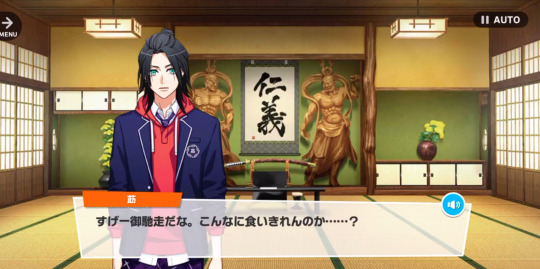
Azami
Talk about a feast. Can I really eat all this…?
Sakyo
You don’t come home that often, so Sakoda poured his heart out into preparing these for you.
Azami
Still, that’s a ton of food.
Sakyo
I told him to ask the boss about it, cause he was so shocked that you’d come back home so openly.
Azami
…Shut it. I dunno why, but I just can’t stop thinking about it.
Chairman
What are you two muttering about over there?
Azami
Ahh… dad, I wanted to ask you something.
Do you know about a ryokan called “Sayuru Pavilion”?
Chairman
“Sayuru Pavilion”... That name takes me way back.
Azami
So you know?
Chairman
Of course I know. That’s where Sayuri used to work.
Azami
Mom worked there…?
Chairman
Not just that, that’s the place where we first met and where I proposed to her.
Azami
Seriously…?
Chairman
Uh-huh. I fell in love at first sight with her and went in for the kill as soon as I could.
Although, Sayuri’s relatives were particularly opposed to us, we eventually got together.
Azami
Huh…
Chairman
Now, why’d you suddenly ask me about that place?
Azami
I just came across some photos of it and thought it looked familiar.
So I was wondering if I went there when I was little.
Chairman
No… I don’t think so…?
Azami
(Then, why do I have a sense of deja vu from that place? Am I just imagining things?)
Sakyo
Speaking of, boss, do you know about the night parties they hold once a year?
Chairman
…Yeah, well.
Azami
?
Sakoda
Here you are! Extra dishes just for you!
Sakyo
Oi, no one told you this was gonna be a banquet. Cut back on the portions.
Azami
… *sighs*
(I came all the way here and I only ended up with more questions than answers.)

Azami
Back.
(I’m tired. I’ll get my mind off my assignment for a bit and think about make-up instead.)
Izumi
Azami-kun, Sakyo-san, welcome home, you made it just in time!
Could I ask you two to come to the lounge?

Sakyo
What’s the situation?
Izumi
I received the plot of the script from Syu-san, so I wanted to discuss the casting.
Sakyo
Huh… The title… “The Tale of Genji”?
Tsuzuru
It’s just a tentative title.
Azami
…!
Izumi
The main character, Hikaru Genji, meets mysterious men in his dreams and reflects on his life.
It’s a fantasy based on the original “The Tale of Genji.”
Azuma
That kind of theme would fit such a beautiful stage.
Yuki
This means that the costumes would be from the Heian period.
Izumi
It also came with a note from Syu-san.

Note
“The lead may be a minor, but if you, who are inexperienced in female roles, give them a half-assed performance, the audience can definitely tell.”
“So I turned it into a wholesome one without women in it. I literally set this up for you, so work hard and don’t mess it up.”
Azami
Wholesome…
Sakyo
The question is, who’ll play the lead role?
Izumi
It all narrows down to “a teenage boy”, it’s pretty limited even if we consider the entire theater company.
Azuma
The candidates would be… Masumi, Tenma, Yuki, Muku, Kumon, Puppy-kun, and—.
Azami
Yeah. …I’ll do it.
[ Prev. ]
[ Next ]
#a3 translation#a3! translation#a3#a3!#a3! event story translation#a3 event story translation#azami izumida#kumon hyodo#sakyo furuichi#ken sakoda#azuma yukishiro#tsuzuru minagi#yuki rurikawa#ah my dearly beloved
24 notes
·
View notes
Text
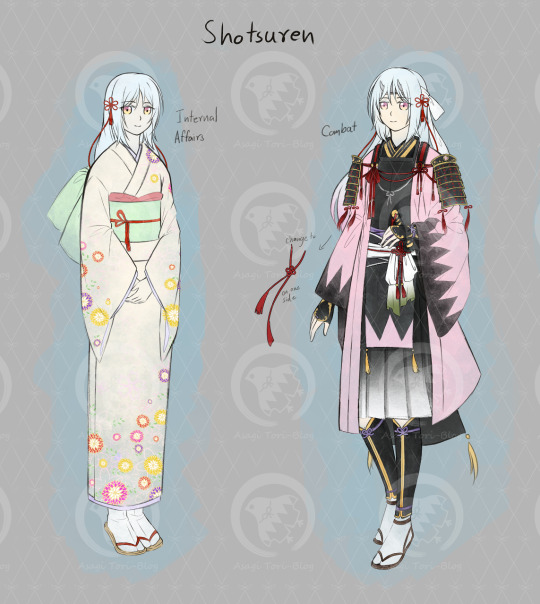




A while back I saw a Hakuouki x Touken Ranbu fanfiction where on one of their missions, Kane-san and Horikawa wander into the Yukimura village on the night of the massacre and encounter Chizuru's Kodachi as a "tsukumogami" trying to get a baby Chizuru to safety
in the fanfiction, Chizuru's Kodachi Shotsuren is actually a Touken Joushi. Which, makes sense since it's implied in the lore that the toudan's form is influenced by their master.
Anyway, I wanted to do my own version of Shotsuren. I'm still not sure if I should make mine a Touken Danshi or Touken Joushi so for now I'll just make them non-binary
I base their combat outfit off of Chizuru's Hakuouki Warriors costume and Heian period noblemen's clothing
these are just sketches sorry that there kinda messy
thanks for viewing ( ´ ∀ `)ノ~ ♡
#hakuoki#hakuouki#薄桜鬼#touken ranbu#touken ranbu oc#刀剣乱舞#hakuouki x touken ranbu#crossover#yamatonokami yasusada#kashuu kiyomitsu#horikawa kunihiro#izuminokami kanesada#my art#shotsuren#小通連#yukimura chizuru#chizuru yukimura
66 notes
·
View notes
Text
why do I trust fandom with anything... This took me 5 min of googling heian period clothing. Like writing this up has taken 6 times as long as realizing fandom heian was wrong when they were describing clothes. Patterned kosode were not outerwear until The End the Heian period (more during the kamakira period honestly) and really only took off afterwards. Heian was the start of diverging from Chinese fashion so during this period it was still Tang dynasty galore. During the Heian period kosode and hakama would have been worn as underlayers. In terms of menswear a hitoe (lit. Layer) would have come on over that, possible many hitoe. There sometimes were even more layers that I don't care enough to research. On the outside would be a closed round collared jacket (think tale of genji, or the clothes in folk tale books like kaguya's story, or priest clothing, or just tang court clothing really). The type of outer round collar jacket and some of the other layers depended on court position and formality.
Here's an intro and list of terms to look up:
Now here's the interesting thing. Sukuna is both a culture snob and the type of dude to do whatever he wants regardless of societal norms. I mean he's wearing a women's kimono which didn't develop until like the 1600s (1800s? Eh some time wayyy after the Heian period. It's also an iki style kimono which didn't happen until the edo period restrictions). But he also gets hung up on a haiku not having a seasonal word and is the type of pretentious bastard to sprinkle his speech with poetic phrases and literary references that no one is going to get. His speech pattern is kinda flowery. Anyways this is all to say that in like the 30min I've looked this up I don't think he'd wear a sokutai which is the formal court dress that's the best documented (on the english internet anyways), and he and yuuji and megumi and whoever else time traveled wouldn't be wearing kosode as outer robes. Whats crazy is that heian period clothing is still being worn in japan 1000 years later at all, even if it's only imperial family and shinto ceremonies. Anyways I think it's more likely he'd be wearing kariginu (狩衣) which are informal hunting clothes. Good to slaughter people in. I'll be honest to my uncultured eyes the types of heian menswear all look the same they just have different names.
In english compiled from wikipedia by machine:
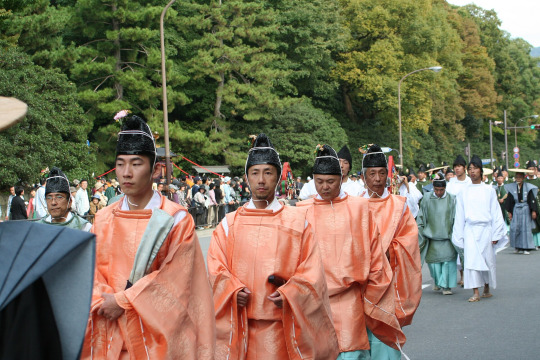

^ menswear like karginu were like this sort of thing (may not be accurate. This is quick and dirty basic research). Also yeah because they were copying the tang dynasty there were all the little funny hats which i refuse to get into.
Not this sort of thing (women's kusode) v

anyways basic internet searching is free and easy.
19 notes
·
View notes
Note
Not asking about geisha/maiko, but I'm generally curious about this kimono photos:
https://www.instagram.com/p/CtZA2bPv0u9/?igshid=MmU2YjMzNjRlOQ==
and
https://www.instagram.com/p/Cr5W4LGL5uF/?igshid=MmU2YjMzNjRlOQ==
What type of kimono is this? Personally I tend to draw this kind of kimono outfit (for a female character themed after a kitsune) with a few modifications (I modified it a bit because the theme of the design is "Japanese Fantasy")
thanks in advance! Kanji is one of my weaknesses in Japanese 😔
The first is a court costume used by Shirabiyoshi, who were female courtiers that performed songs and dances for the nobility (they're considered the original precursors to geisha). The second is a standard court costume used by men during the Heian Period ^^
7 notes
·
View notes
Photo
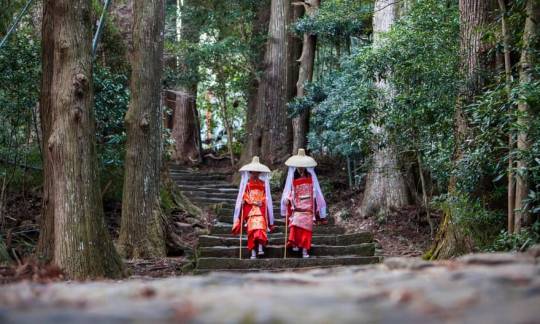
2018: Pilgrims in Heian period costumes.
Photograph: Alamy
70 notes
·
View notes
Text
Touken Ranbu: The Contradictory Tale of Genji
Part 3/3 - Overall Impressions:
On a technical level, the show is quality. The main cast sang melodiously and music composition was suitable to the time period and mood of the show. There was not so much dancing to judge but acting was superb. Many actors had to play double roles such as anyone possessed by Genji or anyone on the Genji side of the plot. The contrast was evident and well-done. The child actor was very professional and I had no issue with her when I’m usually not impressed. That was a pleasant surprise. Set design was minimalist, which made for some creative setups but there were enough hints for the audience to suspend disbelief and jog their imagination. The transitions were incredibly fast and most of it was done using a giant cloth sheet that represented a page of the novel that was waved about.
Of course, I loved the costumes. Combined with the actors, they effectively brought the characters to life. Ladies and lead role Nanami Hiroki got the best picks. Akira got an epic evil costume in the end to represent Genji going rogue. It was a chaotic costume by design with mostly Japanese silhouette but what’s with the Chinese style double skirt, armor design, and hairdo? (jkjk lol) I suppose turning evil turns you into a jumbled mess of modern art. The real moral here is treat your fictional world with care or risk it biting you back.
Now this is a sword show so naturally the fight choreography was incredibly smooth and stylistic while being cleanly executed. Genji is no swordsman but a scholarly prince so his weapon was a fan that Akira wielded gracefully and skillfully in her fast-paced battles. In fact, there was a lot of fan twirling and all done to perfection. My praise is for the effortless ease actors were wielding fans. I would expect them not to drop them as part of the job.
The overarching theme concerning the value of fiction was compelling. When the creeper fan confronts Murasaki and later curses all of Kyoto, the five precepts of Buddhism is referenced. Among these precepts is the prohibition against speaking lies or falsehoods, which encompasses anything ranging from thoughtless remarks to “great fictions.” The fan praises the book but is worried that spreading of such an influential fictional work will result in leading people astray and thus Murasaki would be punished in the afterlife for her sins. In fact, in medieval history a memorial service was held to rescue Murasaki’s spirit from Buddhist hell over this very matter. One can take the traditional Buddhist interpretation of life being hell because life is suffering and impose it over the musical. Therefore, the isekai is a type of trial. Just as the Empress and other readers of The Tale of Genji are grappling with their reality through the novel, they are reliving the parts of the book they resonate with to find a solution to the problem in their lives. An even darker interpretation is the ghosts of Heian-kyo are in purgatory by living in the fiction they became consumed with instead of being present in society. During Murasaki’s time, the upper echelons of society were obsessed with the Cult of Beauty at the cost of governance and economy so was quite corrupt and detached from reality. What more fitting punishment in the afterlife than eternity in their vapid world? Perhaps the touken danshi stumbled upon such a purgatory.
There is also more contemporary views of fiction in this play. Murasaki pushes back in the debate by respecting the intelligence of her fans and expressing the love she has for her writing and its very real value to herself. Furthermore, her avid readership stand in solidarity by citing the novel’s beauty and meaning to their lives either as escapism or example. Here we see more modern values on display with fiction enriching and enhancing reality or supporting readers through their struggles and triumphs. One can also glean commentary about parasocial relationships as well with Murasaki’s interactions with her fanbase and the fans’ earnest love of a fictional character. In short, this is a story about the influence and impact of stories on people and how wonderfully weird and beautiful that relationship is.
The story I enjoyed a lot. Many videogame and anime musicals are shallow cash-grabs but this one went out to tell a meaningful story. I respect that. I’m even tempted to buy the DVD lol. Not like there’s any merch left anyways. All that sold out before the curtains even rose.
#takarazuka og#og lyfe#takarazuka#nanami hiroki#kai#seto kazuya#akira#ayanagi shou#otokoyaku#theatre#theater#touken ranbu#touken ranbu musical#my meta#my rambles#my ramblings#my thoughts#genji monogatari#tale of genji#宝塚OG#宝塚#源氏物語#刀剣乱舞#七海ひろき#瀬戸かずや
15 notes
·
View notes
Text
My Research: So good to see you finally doing less blogging and spending time on other things!
Me: Not by choice.
My Research: Nonsense, today you chose to buy a pricey book on motifs used in tools of the tea ceremony! Your Sensei would be so proud of you!
Me: Yeah, it's... it's totally for my tea practice.
My Research: What motifs shall we learn about first? Some seasonal plants, perhaps? Ginkgo leaves? Chestnuts? Persimmons?
Me: Mui--*cough*--Kana--*coughs*--thatonesketchoflittletanjiroandnezuko--*cough*
My Research: ...you okay?
Me: Sorry, something in my throat. Um. Hey, look, bug motifs. Tell me about... butterflies.
My Research: Lovely, you do like those. In the Japanese tea ceremony, they carry an association with dreams, thanks to the Dao story of Zhuangzi dreaming he was a butterfly, and this may especially be seen on containers for incense. They add a florid and childlike touch to tools like vases and iron kettles, and back in the Heian era, the "Kochou" dance--
Me: !!
My Research: ??
Me: Just, uh, just thinking of that one Noh drama which took place in the Heian era and had a character named Kochou, that's all.
My Research: Ah, I see. This courtly dance was performed by four children in bright costumes with butterfly wings.
Me: Oh wait is that what those costumes are!? Okay, cool, makes sense (and I feel silly for always having thought they were a Phoenix or something).
My Research: See, isn't learning fun (and doesn't even require being tied to your silly anime obsession)? Here's a fun fact, in the dialect of Chinese used around the time of the Nara Period, "butterfly" was synonymous with "80-years-old" and therefore considered an auspicious symbol of longevity--whoa, whoa, hey, you suddenly look like you're going to cry--
Me: Because--because they aren't long-lived--now I'm thinking of tortoiseshells and cranes and freaking apricots again--
My Research: I don't get the apricot references, but that is a consideration when using the butterfly motif, isn't it? In early springtime they had a touch of liveliness and a gentleness that soothes the human heart, but once they're used any later than early summer, they give a sense of transience, of empty dreams in vain...
Me: AAAAAAAAAAAAAAAAAAA
My Research: You're making me tear up now, I'm so glad you're taking this so seriously.
27 notes
·
View notes
Note

Hello! i saw your kimono drawing guide, and i have some questions.
I saw this art and was wondering about a few things:
what is the tied knot& tassel things on the sleeves for?
and, what hairstyle is the lady wearing?
If you know, please tell me!
If you don't know, could it be possible to direct me to someone that might? Thank you for taking the time to answer, if you're able! Have a lovely night/day!
Hi and thank you for your question :) The ukiyoe you are sharing is by Utagawa Kunisada and titled Genji rokujo no hana (源氏六條の花), or "Cherry Blossoms at Genji's Rokujô Mansion". It is part of a three prints set:

It depicts an imaginary scenery from The tale of Genji, and the young lady playing with her pet cat is the princess Onna San no Miya.
Characters are not shown wearing period accurate clothes (from Heian era), but luscious Edo period attires. Because of her rank, the young princess is wearing what Edo princesses would, especially the trademark hairstyle named fukiya 吹輪.
You'll find below a translation from a costume photobook I did a while ago. Note the big bridge style front hairpin, and the drum like one in the back. Princesses from the buke (samurai class) would also have dangling locks called aikyôge (I also found the term okurege), but I am not sure kuge princesses (noble class) wore them too.

There is a whole dispute about this hairstyle, as we are not actually sure it was worn as such by actual princesses. This style may have in fact started as a somehow cliché bunraku/kabuki costume used to depict princesses (think a bit like Western Cinderella-types princess gowns). Nowadays, it is found only as a theater style, or worn by Maiko during Setsubun season.
For comparison, here is character Shizuka Gozen from kabuki play Yoshitsune Senbon Zakura:

As for the dangling cords, I covered those in a past ask about kamuro that you can find here (part 1 / part 2). TL:DR: I am still not sure what is the exact name for those decorations (kazari himo? sode no himo?).
But their use is pretty much linked to 3 things:
1) luck + protection (knots have auspicous meanings),
2) reinforcing weak points of garnment (here: sleeves wrist opening)
3) cuteness impact, as much like furisode (long sleeves kimono) those dangling ribbons were mostly seen on girls/young unmarried ladies by the Edo period
All the design elements chosen by Utagawa Kunisada for his Onna San no Miya stress own young and carefree she is still (which considering her narrative arc is in fact a bit sad... like all Genji Monogatari stories). BUT: bonus points for pet cat!
Hope that helps :)
#japan#kimono#ask#fashion history#art history#ukiyoe#The tale of Genji#genji monogatari#Utagawa Kunisada#hime#princess#onna San no Miya#nihongami#japanese hairstyle#fukiya#katsuyama#kazari himo#sode no himo#dangling ribbon#kamuro#kumihimo#ribbon#cord
487 notes
·
View notes
Text
Mythological elements of japanese culture exhibited in the costumes of Tokyo Revengers.
In the last months of the past year an exhibition was held, it take place un Osaka, Japan and in that exhibition of Tokyo revengers we was able to see merch, sculture, art, etc, all referent at the anime. But in this ocassion the important part is the promotional poster, where we can see the main characters and principals of the history, and each of them were wearing costumes with their characteristic colour and a stamping of animals, demons or spirit that are from the japanese culture, these stamping are conected whit the role each character plays in the anime.

We are going to see the mythological creature and how their leyend are conected with the character who wear it, in this ocassion we’re gonna see 3 characters only. Warning, this might contain spoilers.
Takemichi Hanagaki
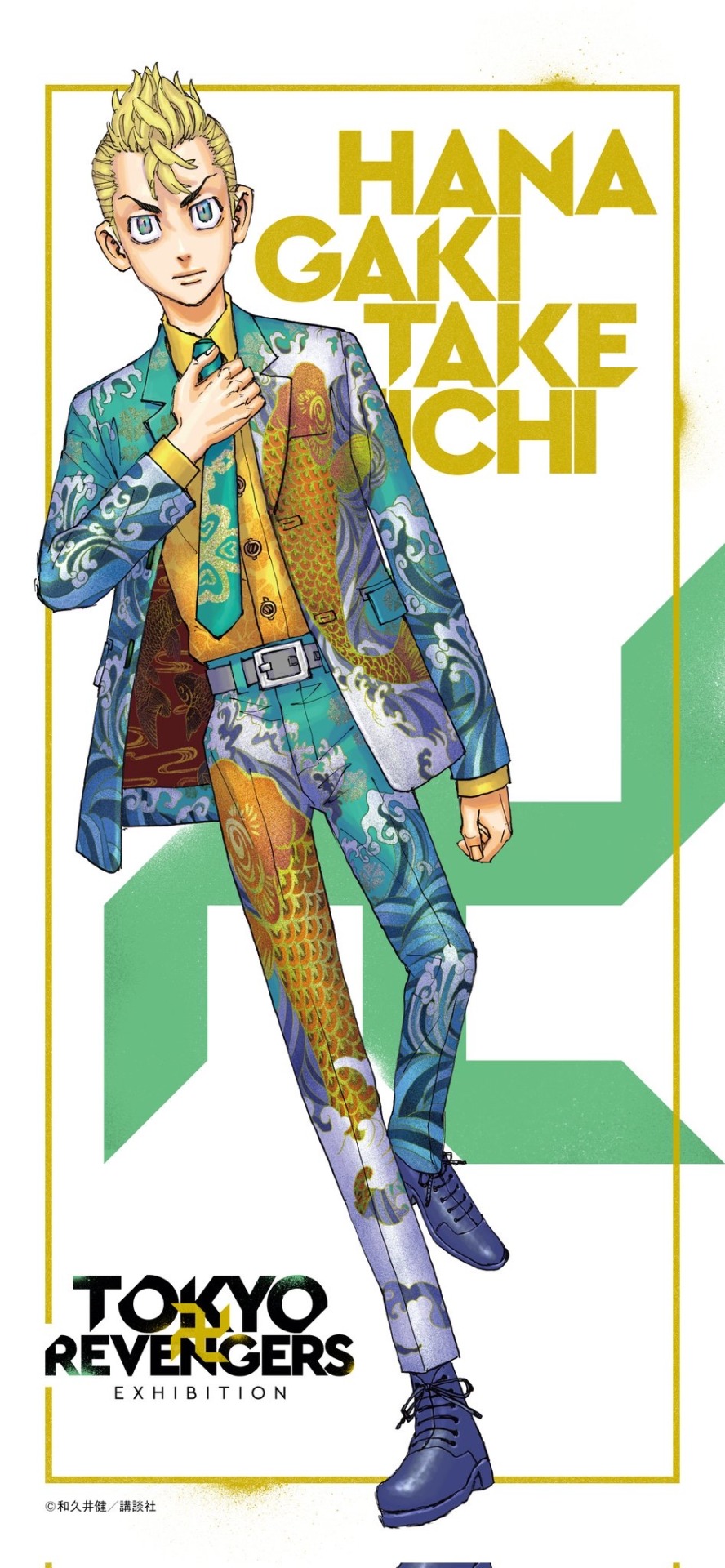
In him costume we see the representation of the Fish Koi, wich represents courage, bravery, effort and overcome the obstacles.
In the japanese leyend, Koi who managed to reach the end of the river were rewarded for their effort and perseverance, turning into a majestic dragon.
Takemichi in all the manga shows us repeatedly his perseverance, firstly trying to save Hinata and later Mikey, striving hard to achieve his goals regardless of all the difficulties that were presented along the way. The manga isn’t finished yet so we can’t determinated is he can to reach the end of the “river” (save everyone from a terrible future) and turning in a “dragon” (maybe die trying the happines of everyone).
Manjiro Sano

We can see the figure of the Yokai Nue in mikey’s costume. The Nue are one of the most ancients demonds of the japanese culture, is named in different periods, being the Heian, Wamyo Ruijusho the first (938 a.c)
The Nue have the head of a monkey, the body of a tanuki, the tail of a snake and the extremities of a tiger. Is name is compound by 2 kanjis what means “night” and “bird”.
These demons bring bad luck and diseases, pest carriers and bad omen. They create terror in Japan, cause just their presence can bring devastation. Inside the yokai world this demons is simbol of respect, all his brothers and demons of below level respect him cause his bad luck and negative energies can pass to them, and also to the humans.
This mythological creature is a very good representation of what is mikey in the manga, someone superior, everyone below him appreciate, adore and respect him, even if they are not accord of his ideals. In every timeline, whatever happend if for Mikey, even in the first one, were he don’t have the dark impulse, is he the reason of everything in the manga, good or bad.
Ryuguji Ken

Draken is represented by the dragon Seiryuu, who represents the water, the spring and the blue colour. In Japan think that Seiryuu protects the east of Kyoto and algo the stations of the year. Is in the spring were japaneses celebrate biggers ceremonies of their culture so they think seiryuu are protectem them.
The leyend say that before Seiryuu hide, him walked and lived with the humans. He lived in a temple were the humans go to comunicate and receive his bless. Seiryuu has a warm and considerated heart, algo a is so empatic with the live’s creature. When this God fly around the sky can bring happines to the people hearts.
In all the manga, even when draken died, he is mentioned like a creature of light, a hope, a person with golden heart, and the heart of mikey and Toman, draken was important in all the lifes he touch, and he do everything to make his friends happier, he put his life in danger many times for Toman, and for mikey.
Javiera Rojas
2 notes
·
View notes